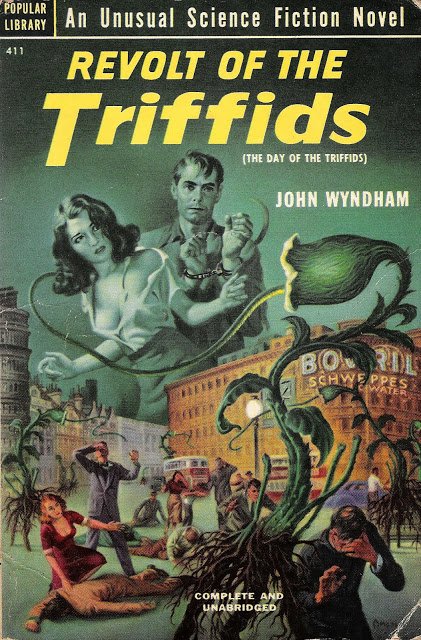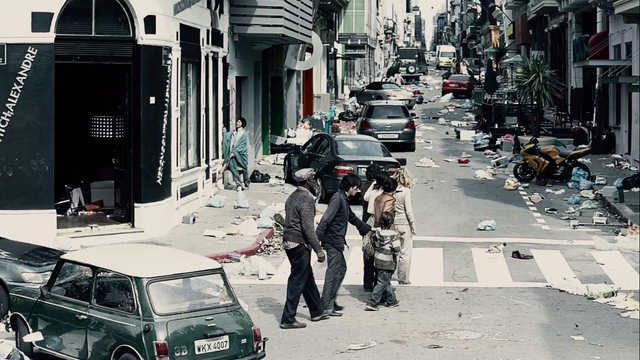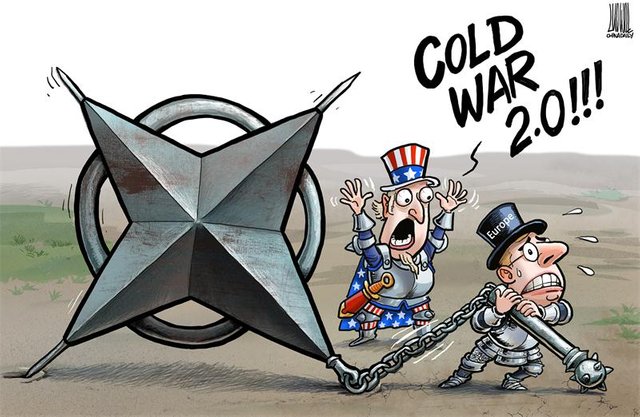A Triffid Apocalypse - Nature Strikes Back
Day of the Triffids was written by British Sci-fi writer John Wyndham. Written in 1951, but set about 25 years into the future, it has been described as one of the most famous catastrophe novels of the twentieth century.

Public Domain
The basic plot is that one night there is a massive global comet display which blinds everyone who witnesses it. Our hero, Bill, rescues a woman, Jo, from the clutches of a man who has her tied to him and is coercing her with violence. Already reeling from this catastrophe, there is the additional threat that now comes from the Triffids. The Triffids are genetically modified carnivorous plants (created by the Russians!) that take the opportunity of a blind population to escape captivity and feed upon them. Then there is a mysterious plague.
Some have described this as a "cosy catastrophe". Indeed compared to the cannibalism of The Road, it is pretty cosy. There is a focus on how, in this post collapse world, society may be organised. There is a religious community for example, but that is over run. Then there are the inevitable tensions between military authoritarianism and democracy, and between those wanting to be in small groups and those in larger communities. There are discussions about women's role in this new world, allocations of blind to non-blind people, and legacy issues. Is it a choice between Civilisation and Barbarism?

Public Domain
Our hero, Bill, represents the individual; adaptive and with a strong sense for survival . He appreciates fairly early on that no help is coming. In face of this reality he is surrounded by those who cling to the hope that the Americans are coming to the rescue. Wyndham is of course writing after a catastrophic world war and threat of social collapse in Europe . There is an inherent criticism of American involvement. This could be extended to the over involvement of any government, especially in war time Britain when the welfare state was introduced.
Bill is one of the first to point out the dangers of the Triffids. He is seen as rather mad at first for being so concerned about them. Unlike the domesticated masses, Bill, through his work with Triffids, has more respect for nature. Throughout the book people first express disbelief, surprise and finally acceptance that the plants can hear and communicate. That they are intelligent. There is an overriding theme that the cosy life makes individuals complacent to the dangers of nature. That due to hubris our advantage as the dominating inhabitants could be quickly reversed. Bill is later proven to be the one with foresight.

Google images
Bill is separated from Jo and moves through the country looking for her. He does so fairly ruthlessly albeit in a quiet and determined way. There is a definite split in the book between those who have been blessed with sight and the enfeebled masses unable to fend for themselves. They have been cursed by blindness, symbolic of not paying any attention to the world in which they live. They may as well be the zombies as depicted in the film 28 Days Later. A film which copies the opening of Day of the Triffids in which hospitalised Bill must take the decision to unwrap the bandages from his eyes, thus displaying his individualism. Bill then displays his moral adaptability by realising if mankind is to survive he must leave the blind to fend for themselves.
.jpg)
Google images
Bill finds Jo again and they settle down in a farmhouse. However they are constantly keeping the Triffids at bay whilst old supplies dwindle and infrastructure deteriorates and is taken over by nature. With clear intent and demonstrating the ability to learn the Triffids mass the fence with inevitable break-ins. There is a strong sense that its only a matter of time before they are victorious. In this world man is locked into battle against nature for survival. However, the Triffids also play a limiting role on the expansion of the human race - a counter balance.
Bill reflects on how man's actions have brought about the apocalypse. The Triffids were developed because they were found to contain valuable oil. Wyndham points the finger firmly at man's greed for cultivating GMOs. Near the end of the book Bill also starts to expound on his conspiracy theories. Firstly, that rather than a comet, the display originated from a satellite weapon designed to burn the retina. Secondly, the plague was actually biological warfare. These Cold War social anxieties match our own in the present day, given that we are now in Cold War 2.0.
A central idea of this novel is that we walk a tightrope, despite the apparent cosiness of our lives in the West, we are one step away from complete collapse. An apocalyptic event could happen in your life time. As illustrated in Dr Joseph Tainter's study of the collapse of civilizations, a key feature is that the more complex our society becomes the more vulnerable it becomes to such an event.
In John Wyndham's novel, societal breakdown leads to a situation where man finds himself pitted against nature. Having first interfered with nature, man is then unable to contain it's dangers. The survival of the fittest narrative is evident, however, and is represented by Bill, our English, liberally educated white male. The book ends on an optimistic note; that man will survive and drive the Triffids back. That is, unless you are rooting for the Triffids.
Further Reading
blindess
Penguin Book Review
Primitivism
Global Expansion
.jpg)
Albert Goodwin's The Apocalypse (1903)
